Bringing home a newborn baby from the hospital is already a daunting task, especially for first time parents. There is so much to think about and the baby’s safety is the number one priority. In order to ensure that your little one is entering a safe environment, it is crucial as parents to baby proof your home!
It’s important to start on some of these baby proofing tasks before your newborn even arrives home for the first time. We will address those tasks, as well as walk you through the important baby proofing tips room-by-room to make sure your house is as safe as possible for your infants, babies and toddlers!
General Baby Proofing Tips For House Safety
Before we breakdown the baby proofing room-by-room, there are some general and important baby proofing tasks to handle. These apply to many areas in the home and should be applied in each room that would require these baby proofing measures.
1. Water Heater Temperature
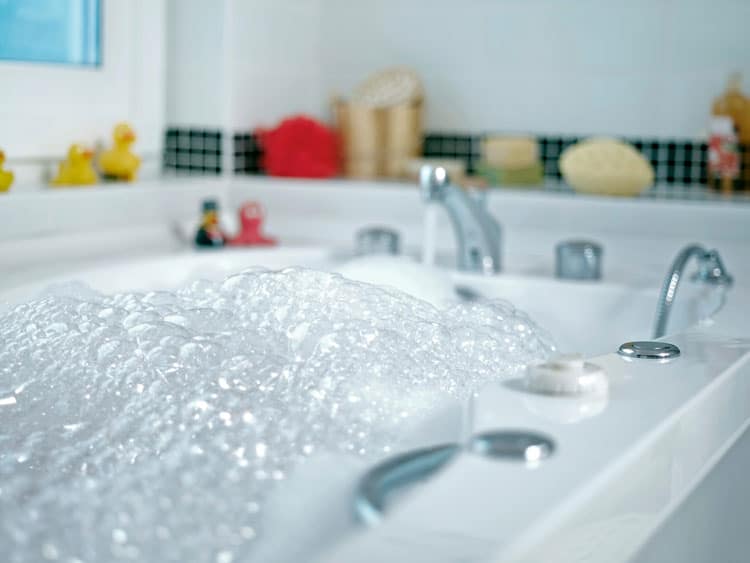
Ensure that your water heater temperature is set below 120F. This will ensure that bath water will be at a max temperature that will not scald your baby at bath time.
2. Carbon-Monoxide Detectors
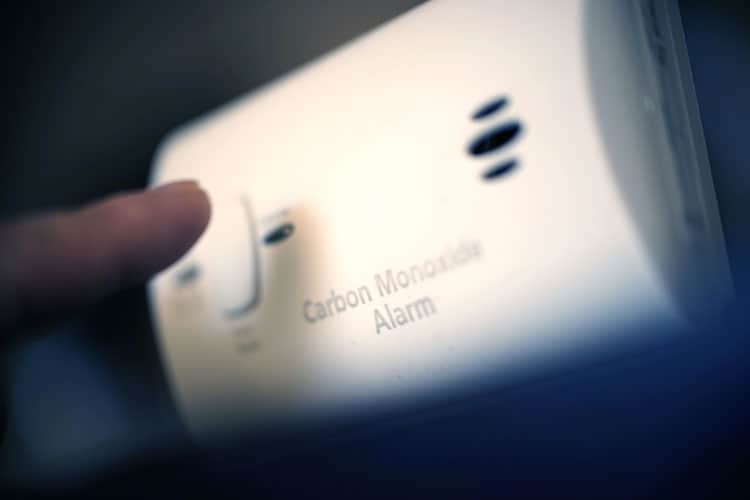
It is crucial to make sure there are carbon-monoxide detectors installed on every floor of the house if you use gas or oil appliances, or have an attached garage.
3. Smoke Detector
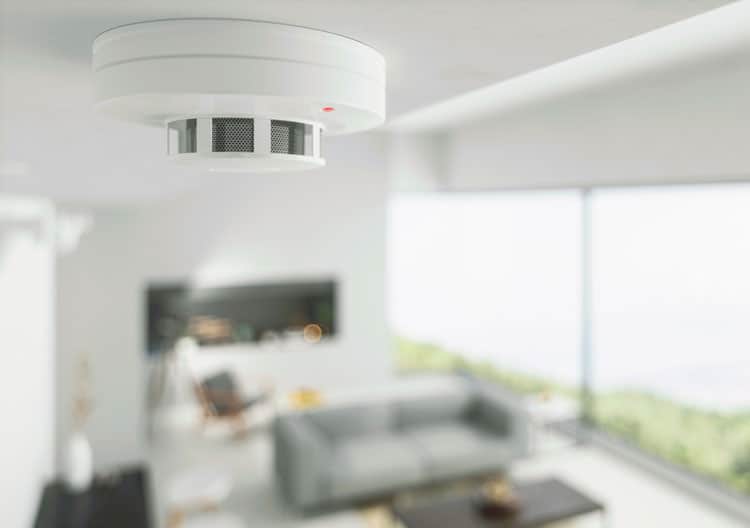
Make sure that there is also a smoke detector on each floor of your home so that you will be alerted instantly if smoke or fire is detected within the home.
4. Fire Extinguisher
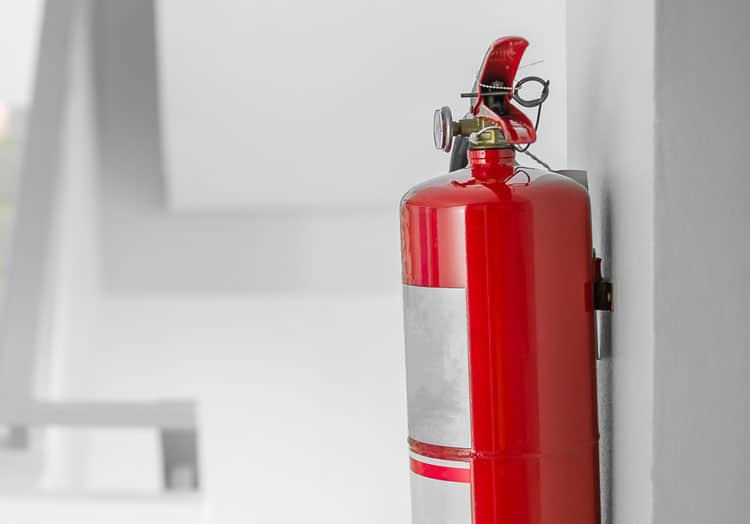
Purchase a fire extinguisher and install it in an easily accessible area if needed in case a fire breaks out.
5. Emergency Contacts
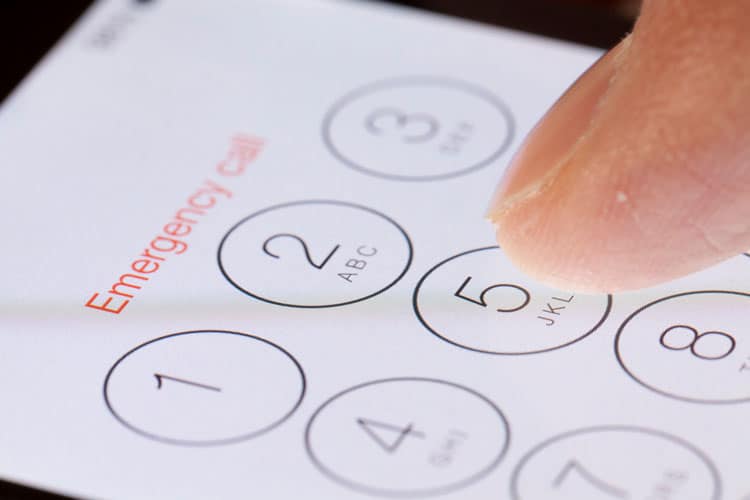
Add emergency contacts to your phone that can be accessed even if your phone is in locked mode.
6. First Aid Kit
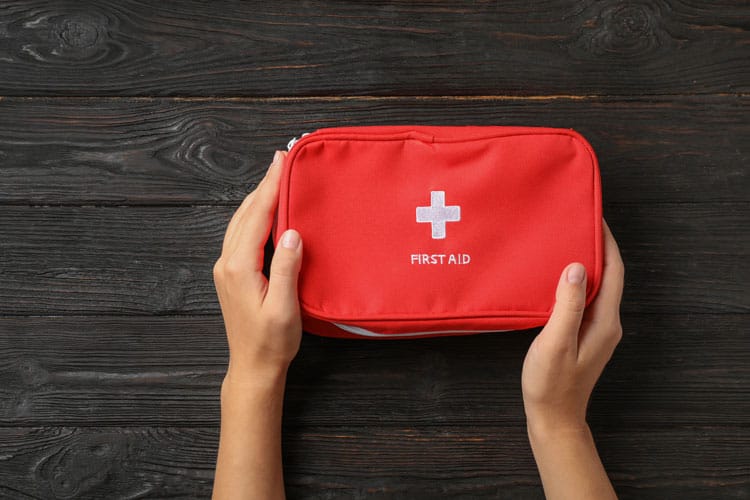
Have a first aid kit handy or stored in your medicine cabinet, stocked with baby items such as a baby thermometer, band aids, gauze, baby acetaminophen and medicine dropper.
7. Outlet Covers
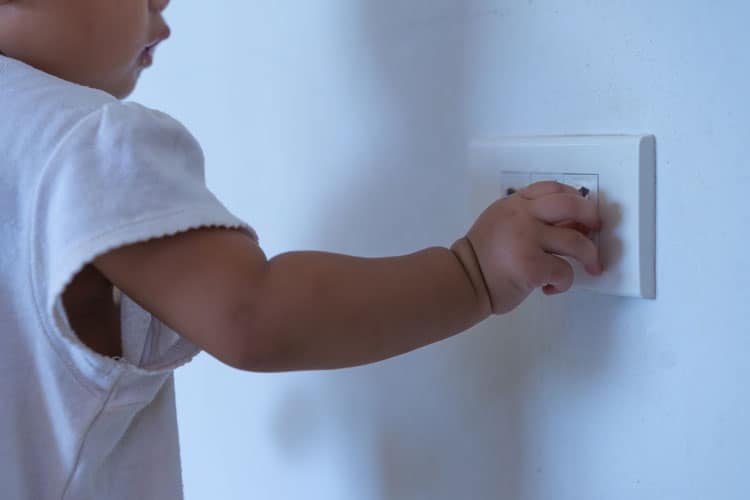
Block all electrical outlets with baby proof outlet covers or move large furniture in front of the outlets.
8. Cordless Blinds
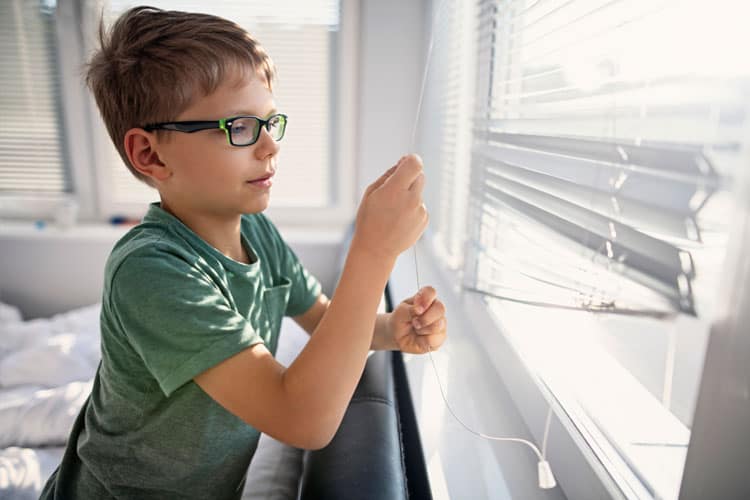
Install cordless blinds in all rooms of the house. If you do not have means to do this, the cords will need to be tucked away up high with a cord stop or clip. Window blind strings and cords are a strangulation hazard for babies and toddlers.
9. Baby Gates
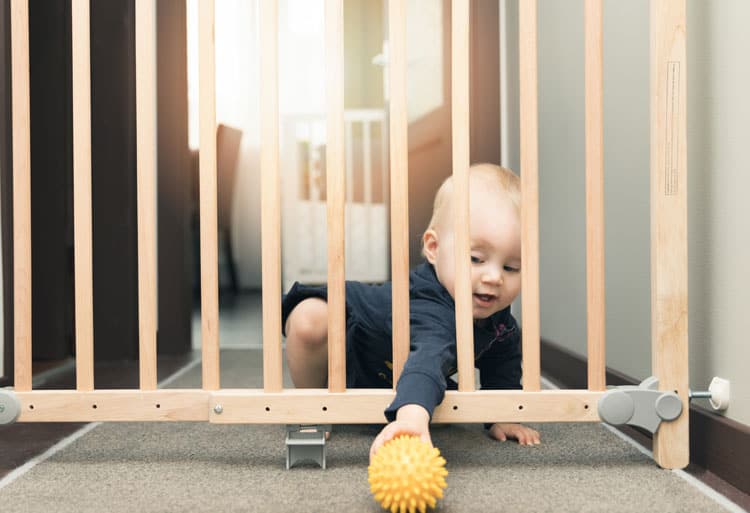
Make sure to install baby gates at the top and bottom of staircases as well as at the entryway to any spaces that you want to keep your baby from entering.
10. Door Knob Safety Covers
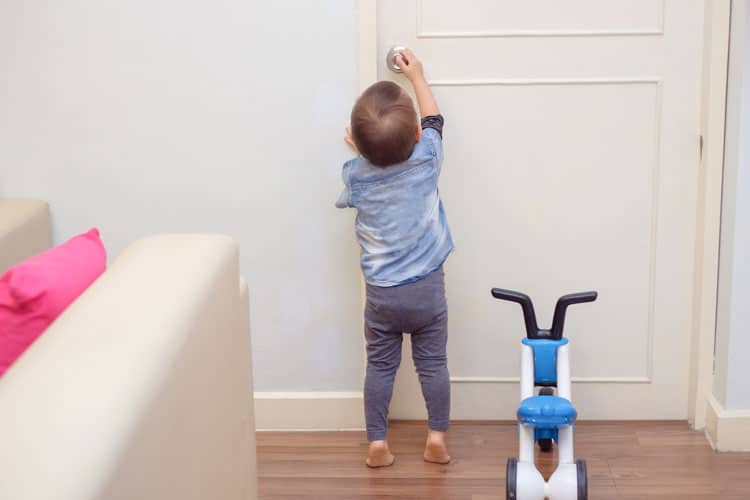
Fit door knob safety covers on door knobs of any rooms you don’t want your child to enter, especially doors that lead outdoors, into the garage or into basements with staircases.
Baby Proofing the Kitchen
The Kitchen is an area where there are definitely a lot of potentially hazardous situations for little ones to get into, especially if they are crawling or walking. Make sure you are meticulous when baby proofing the kitchen by following these steps!
1. Cleaning products
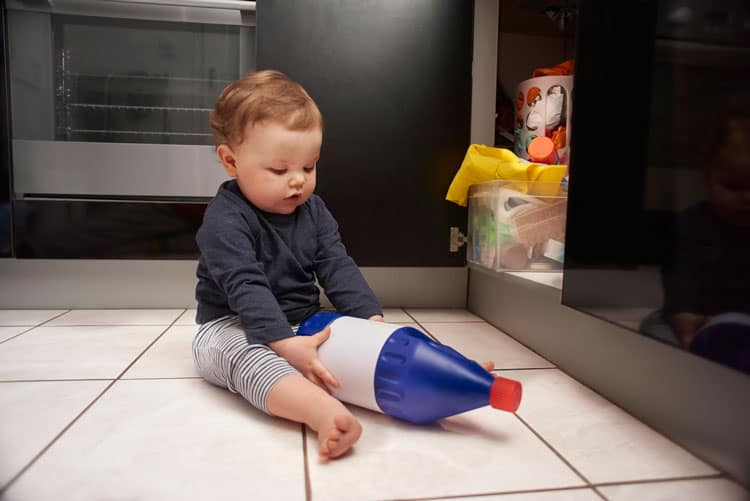
Move all cleaning products and supplies from lower cabinets, cupboards and drawers and place them in higher cabinets and shelving that is out of baby’s reach. Many of these items are toxic and hazardous and could cause harm or even death if ingested.
2. Paper and plastic bags
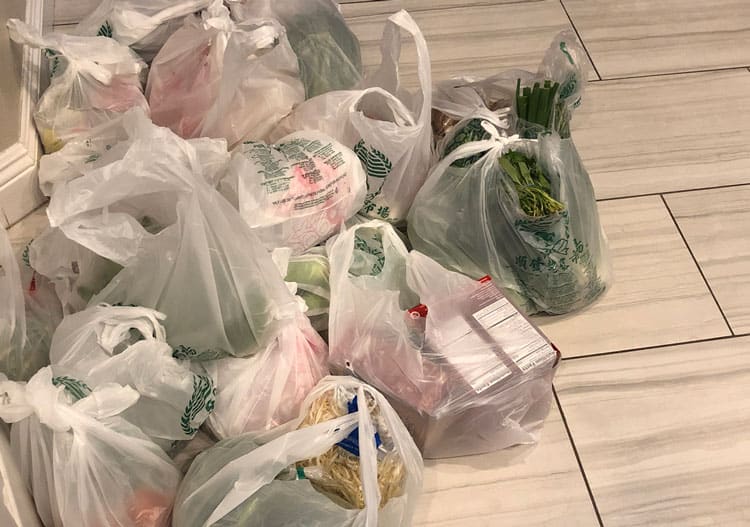
Store paper and plastic bags out of reach of curious little hands as they are a suffocation hazard.
3. Recognize and remove choking hazards
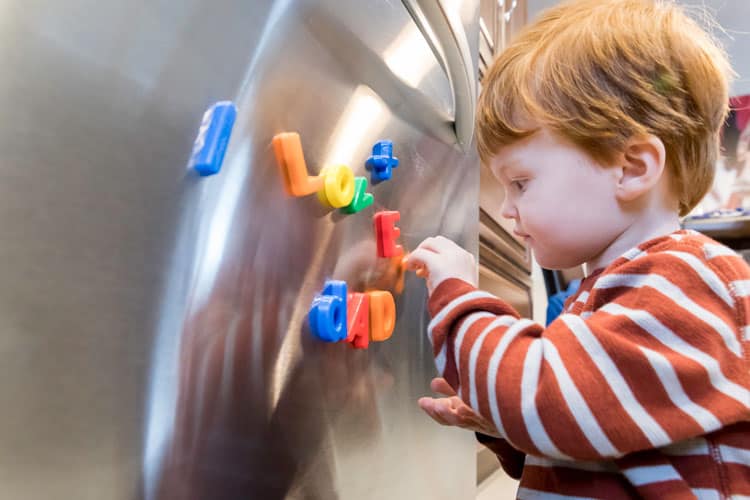
Move small kitchen items such as magnets or chip clips out of reach as these can become choking hazards.
4. Use stove knob covers
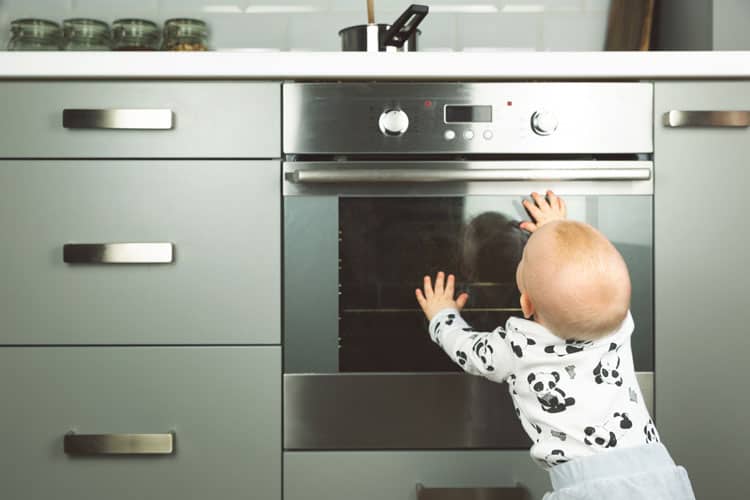
Install stove knob covers on all stove knobs which will guard against your child being able to turn on the burners.
5. Glass dishware, knives and sharp objects should be out of reach
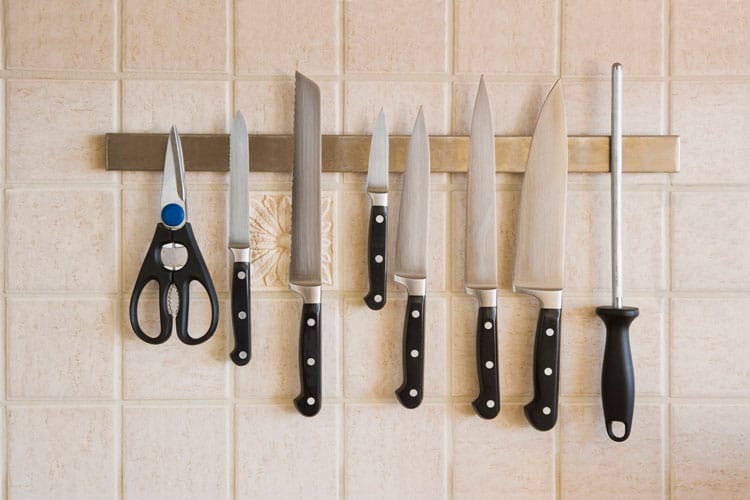
Store glass dishware, knives and other sharp objects such as scissors and cheese graters out of baby’s reach.
6. Unplug appliances when not in use
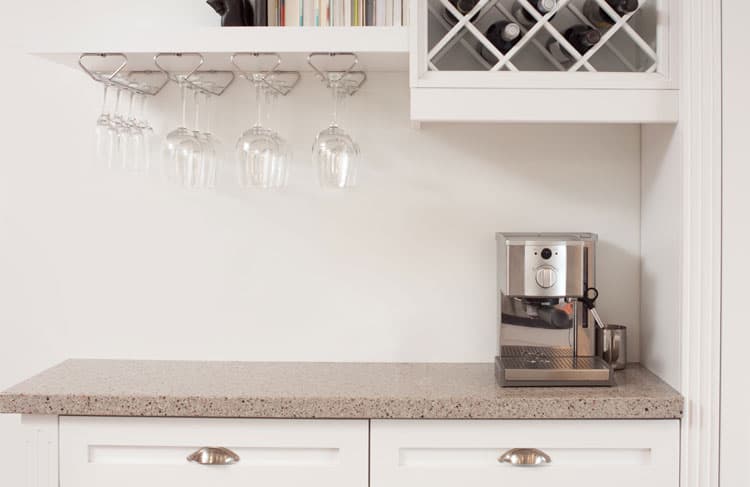
Unplug small appliances such as toasters, coffee makers and blenders when not in use. Make sure there are no dangling cords from these items which could either be potentially pulled off of the counter by small children or act as a strangulation hazard.
7. Latch drawers and cupboards
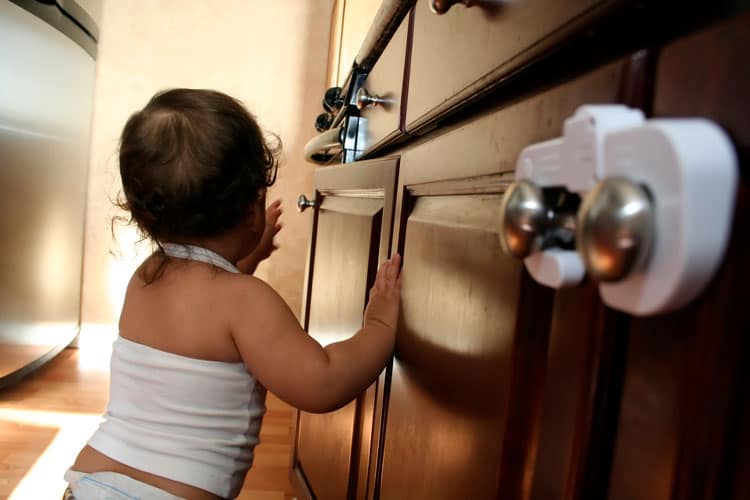
Latch all drawers and cupboards with baby proof latches so your children can’t access the items in these areas.
8. Cook on the back burners
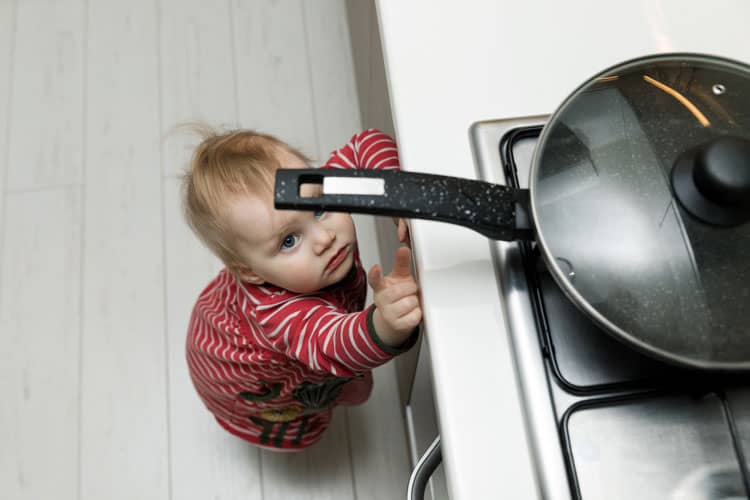
Only use back burners when cooking. Hot pots and pans can be pulled down by kids if they are easily accessible on the front burners. And always turn the handles away from the front of the stove for an added precaution.
Related articles:
- Indoor Air Pollution: How to Protect Your Baby
- Car Seat Safety: What Every Parent Should Know
- Parenting Failures & How to Avoid Them
Baby Proofing the Living Room
There are many potential hazards lurking in most living rooms that need to be addressed and baby proofed, to ensure maximum safety for your little ones. This list outlines what items need baby proofing in your living room!
1. Corner guards
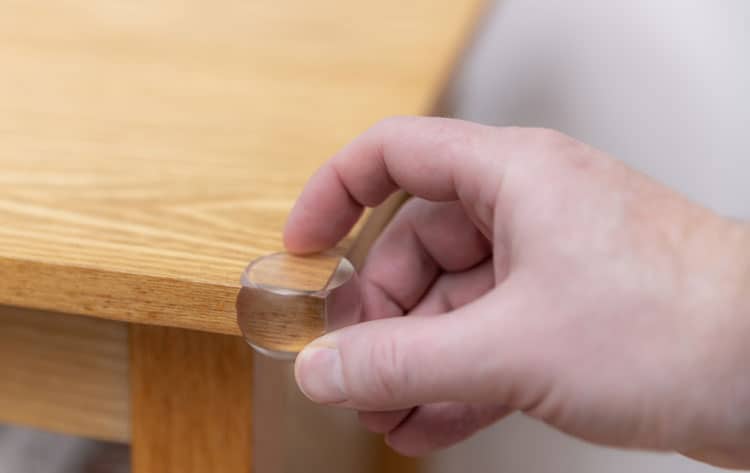
Add cushioned corner guards to sharp edges in your living room such as coffee tables and side tables.
2. Secure your television to prevent it from tipping over
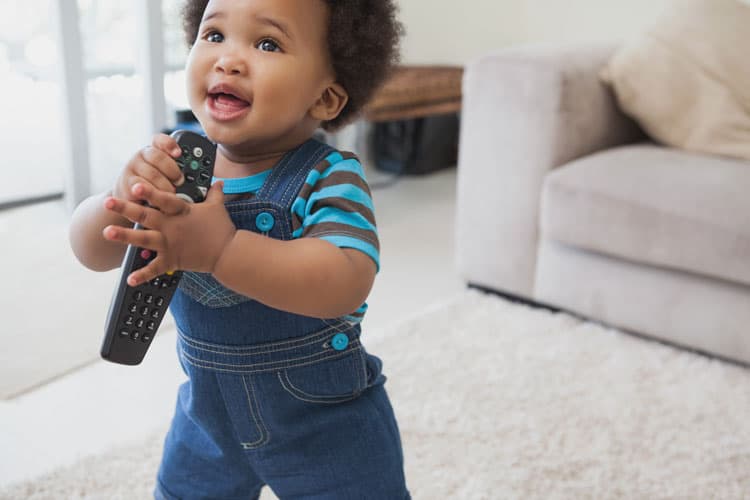
Make sure the TV is securely attached to an entertainment system or to the wall so that baby doesn’t grab it and pull it over onto themselves.
3. Store away breakables

Store away breakable items such as glass candles, framed pictures and keepsakes out of baby’s reach.
4. Mount bookshelves to the wall

Mount and secure bookshelves to a high location on walls and secure bookcases so that your baby can’t pull them over.
5. Move furniture away from windows

Ensure that all furniture is moved away from windows as your baby could potentially climb on top of the furniture and fall out of the window.
Baby Proofing the Nursery
You and your baby will be spending a lot of time in the nursery/baby’s room, so make sure it is completely baby proofed and free of any hazardous situations.
1. Secure dressers to the walls
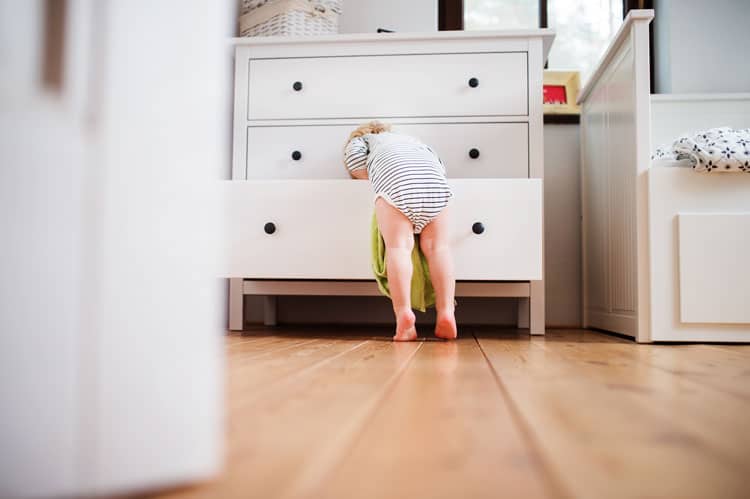
Make sure you bolt and secure dressers to the wall with an anti-tip kit as dressers present a very dangerous toppling hazard.
2. Crib safety is one of the most important baby proofing measures.

Make sure your baby’s mattress is positioned at the appropriate height for their age. If it is too high once they can pull themselves up and stand, they could potentially fall out of the crib. Also, make sure that the crib slats are no more than 2 ⅜” wide and that there are no gaps between the mattress and the crib, and that all bolts and screws are secured tightly. Finally make sure that cribs are not placed close to windows, lamps or other furniture.
3. Blankets, bumpers and stuffed toys
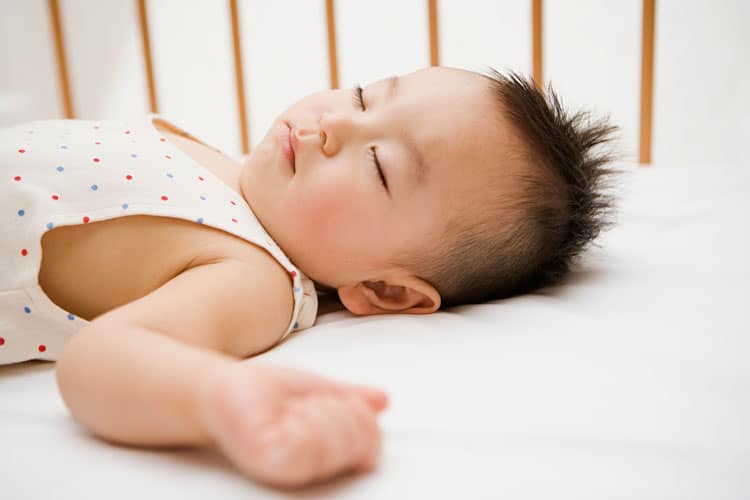
Your baby’s bed should be free of any items except for a tightly fitted sheet. Blankets, bumpers and stuffed toys present a suffocation hazard to babies.
4. Paint safety
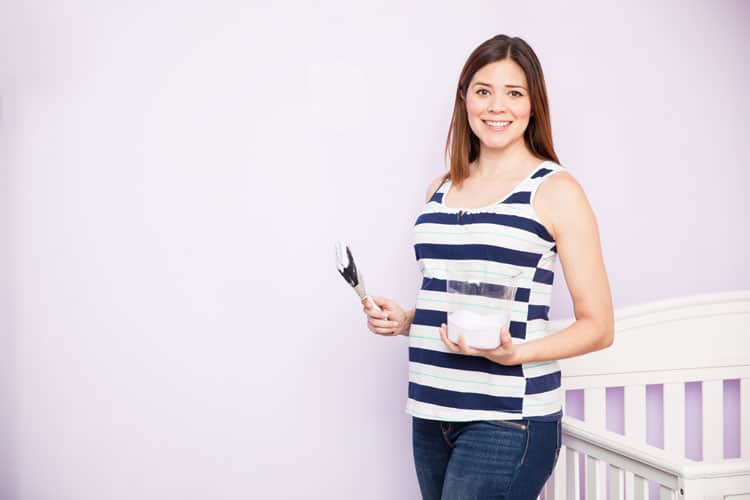
If you are planning on painting your baby’s nursery, make sure that all painting work is complete at least 8 weeks prior to your baby’s arrival, as this will allow enough time for toxic fumes to dissipate.
5. Baby supplies
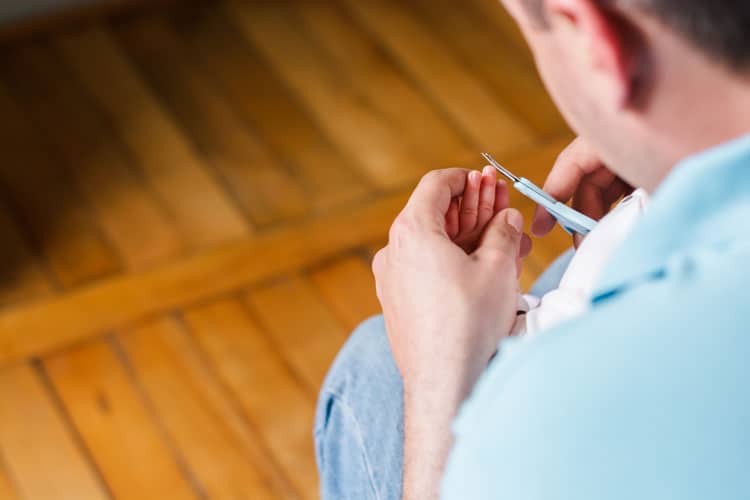
Place baby supplies that you typically find in the changing area within your reach, but out of your baby’s reach. This includes items such as baby nail clippers, lotions, combs, brushes and diaper creams.
6. Dangling cords and mobiles
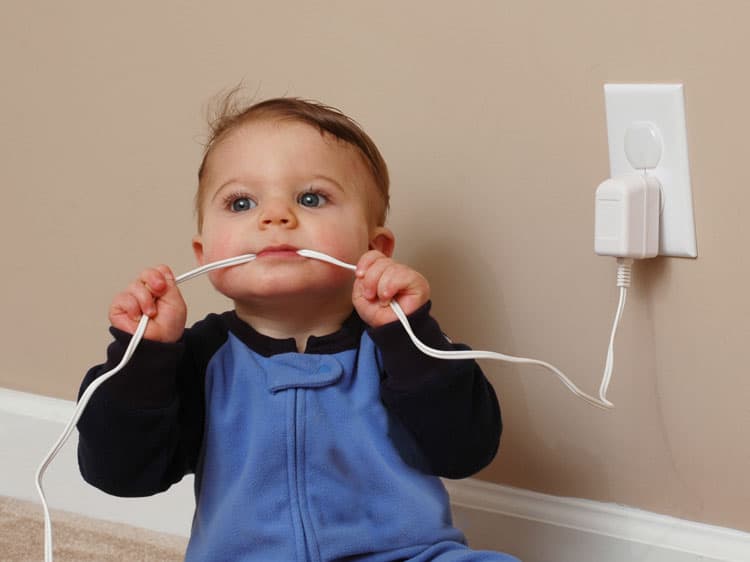
Make sure there are no dangling cords from baby monitors or mobiles close to your baby’s crib.
7. Window safety guards
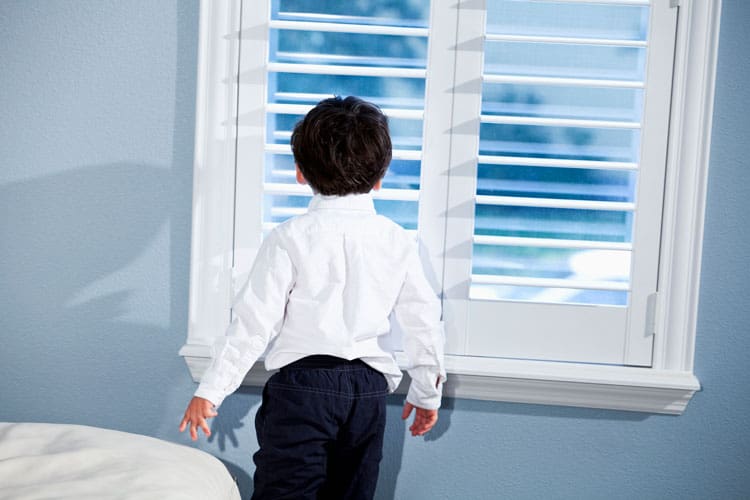
Add safety guards to secure windows so that toddlers don’t climb on furniture and have access to the outdoors, or potentially fall out of the window.
8. Purchase baskets, hampers and toy boxes without lids.
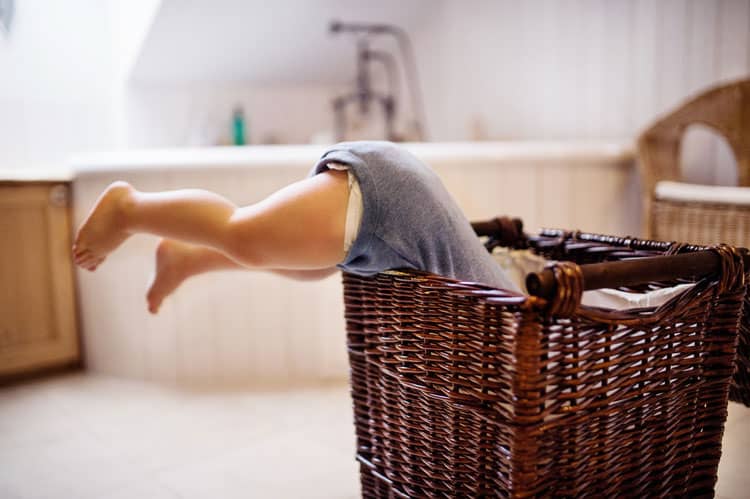
Small children can easily fall and get stuck in tall hampers or baskets if they try hard to see what’s inside or climb in. Toy boxes should not have lids or have lids that don’t slam shut. Children can get trapped inside.
Baby Proofing the Bathrooms
Bathrooms also need thorough baby proofing as there are plenty of dangerous situations that are often present in this room.
1. Bathtub and water safety
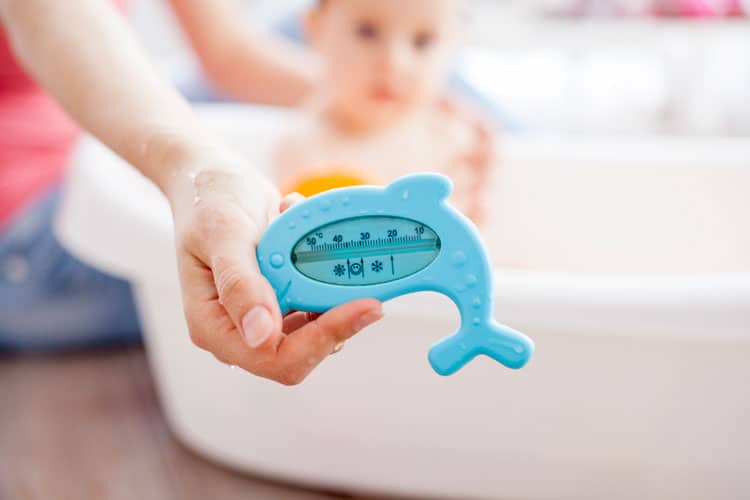
Make sure you never leave your baby unattended in the bathtub, not even for a brief second, as a baby can drown in just a few inches of water, especially when they don’t have sufficient neck strength and control. Also make sure the temperature is no more than 100F. Use a bathtub thermometer to make sure the temp is correct.
2. Bathtub grippers
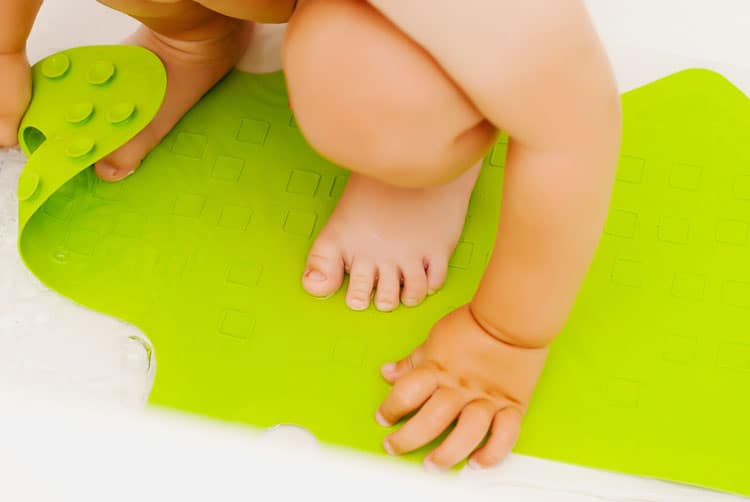
While we are on the subject of bathtubs, it’s a good idea to use grippers on the floor of the bathtub so small children don’t slip and fall. There are even handy faucet covers that prevent getting hurt if your child bumps into the faucet.
3. Medication is an important baby proofing consideration

Place medication and vitamins in high up cabinets that are out of baby’s reach. Also use a safety latch to secure medicine cabinets as an added safety measure.
4. Toilet seat latch
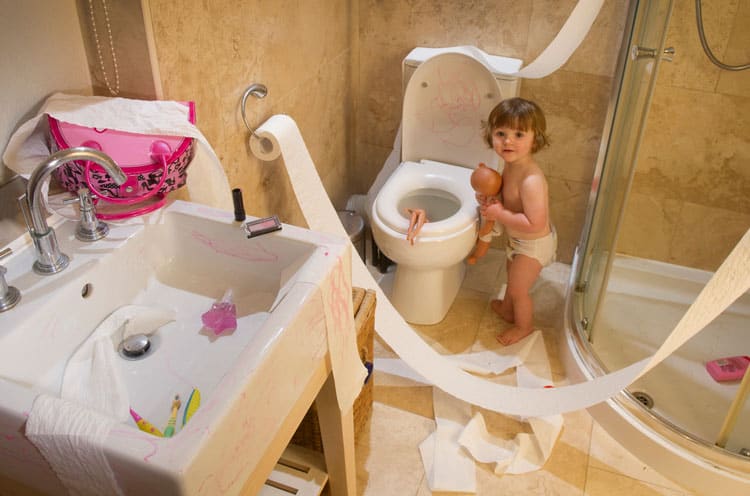
Add a toilet seat latch to your toilet once your toddler becomes mobile.
5. Store harmful items out of reach
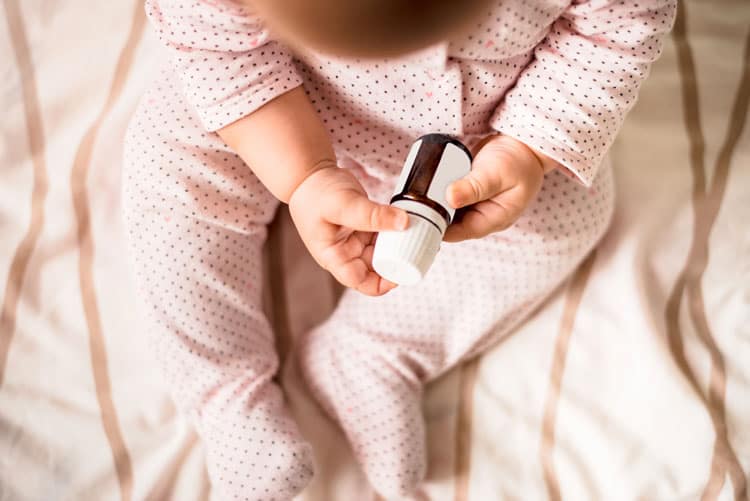
Move harmful bathroom items such as scissors, nail clippers, tweezers, razors and electric shavers out of baby’s reach. This also applies to items such as mouthwash, hairspray and any cleaning products that you generally store in the bathroom.
6. Electrical items
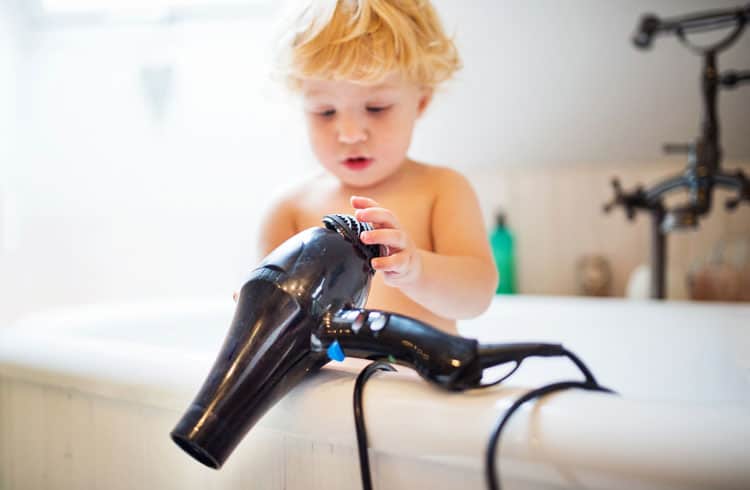
Keep all electrical items that could potentially fall into the bathtub stored away. Also make sure there are no hanging cords from hair dryers or hot curling irons within baby’s reach.

Jennifer O’Neill is an Independent Quality Provider with BabyQuip, helping families travel lighter and happier. She is a mother of two boys and enjoys working out, spending time with family and friends and of course, traveling.

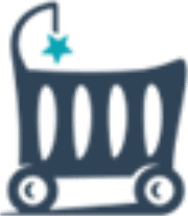
Wow, so thorough.
What a great all-encompassing article! Very Important!
I must be living under a rock. I had no idea about the corner guards. I had seen like big bulky ones before but those are just the right size. Thanks for sharing so many great ideas and tips!
Great tips! As a mom who started over again, you tend to forget some of these. Thanks for the refresher!
Wow, this is a great list for new parents as well as not so new parents!
These are great tips! It’s always so surprising how quickly the little ones are able to get themselves into mischief. Baby proofing these areas will definitely help.
All such helpful info. I recently read an article about how cell phone cords are not only a strangulation hazard but also a real risk for electrocution, if baby puts the end in their mouth.
So many great tips here! I didn’t know about door knob coveres with my first but we’ve used them everywhere since our second! Keeps him from not only trying to open outside doors but also the kitchen pantry and getting into ALL the snacks!
We had to go as far as to put a door handle safety lock on our front door! I once had a suggestion for the Door Monkey for indoor doors to prevent finger jams, access to room but still allow for the room to provide air circulation. It is a genius product!
Thank you for such a comprehensive list! Tons of great pointers. My little one will be crawling soon so it is time to get busy!
I haven’t seen those corner guards before, I definitely need to get a set of those! Great tip!
IKEA gives away free anti-tip kits at customer service!
That is amazing! So good to know.
These are such great and important safety tips! Curious minds find ways to get into so much!
nice complete list. thanks.
Wow! I better get started. My daughter just learned to walk and I’m noticing a lot more things she can easily get into.
I do pretty much all of these things as a licensed dc provider!
I’m curious why you need a carbon monoxide detector on every level of the home? I thought it was a low lying gas tht wasn’t easily detectable on the second level of the home.
Timely article for my family. My toddler has become very mobile and is getting into & opening everything.